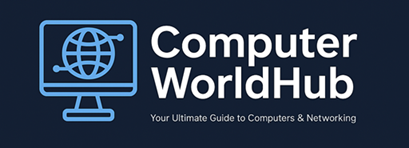Introduction
In 2025, reliable network troubleshooting tools are essential for IT professionals to identify and fix network issues quickly. From small businesses to enterprise environments, the right tools can help minimize downtime and boost efficiency.
Today’s IT teams deal with challenges like packet loss, latency, slow connectivity, and security breaches. Modern network diagnostic tools make it easier to detect and resolve these problems proactively.
🔍 1. Wireshark

Best for: Deep packet inspection and protocol analysis
Wireshark is a free, open-source tool for capturing and analyzing network packets. It helps diagnose hidden problems such as dropped packets, protocol mismatches, and intrusions. A must-have for every network admin.
Example: An IT team used Wireshark to identify unauthorized traffic on port 443, pointing to malware infiltration.
📊 2. SolarWinds Network Performance Monitor

Best for: Real-time network performance tracking
SolarWinds NPM is a paid tool for large IT infrastructures. It shows device status, traffic bottlenecks, and connection problems using SNMP monitoring and real-time dashboards.
Example: A company used SolarWinds to find out that an old switch was causing intermittent packet loss.
🚦 3. PRTG Network Monitor

Best for: All-in-one performance monitoring
PRTG is perfect for both small businesses and enterprises. It uses sensors to track servers, routers, and applications. The free version offers 100 sensors, ideal for new admins.
Example: A system admin configured PRTG to alert them if CPU usage on critical servers exceeded 80%.
🔎 4. Angry IP Scanner

Best for: Fast scanning of IP addresses and ports
Angry IP Scanner is a lightweight tool for scanning local and remote networks. It shows active IPs and open ports, great for checking unauthorized devices.
Example: A school network admin used it to find unknown phones accessing the Wi-Fi.
🌐 5. Nagios

Best for: Customizable open-source monitoring
Nagios is ideal for advanced users who prefer a plugin-based system. It can monitor hosts, services, applications, and cloud setups with real-time alerts.
Example: A Linux admin set up Nagios to monitor disk space on all servers and receive SMS alerts for low space.
📶 6. NetSpot

Best for: Wi-Fi coverage analysis
NetSpot provides Wi-Fi heatmaps to help optimize signal strength. It’s perfect for improving coverage in offices, cafes, or homes. Available for Windows and macOS.
Example: A café owner used NetSpot to reposition the router and eliminate dead zones.
🕛 Conclusion
These top network troubleshooting tools help IT professionals fix problems quickly, prevent downtime, and optimize performance. Whether you’re a beginner or seasoned admin, investing time in learning these tools will benefit your career and your organization.
Tip: Bookmark this guide and keep these tools handy. Don’t forget to share this post and subscribe to our newsletter for future updates!
